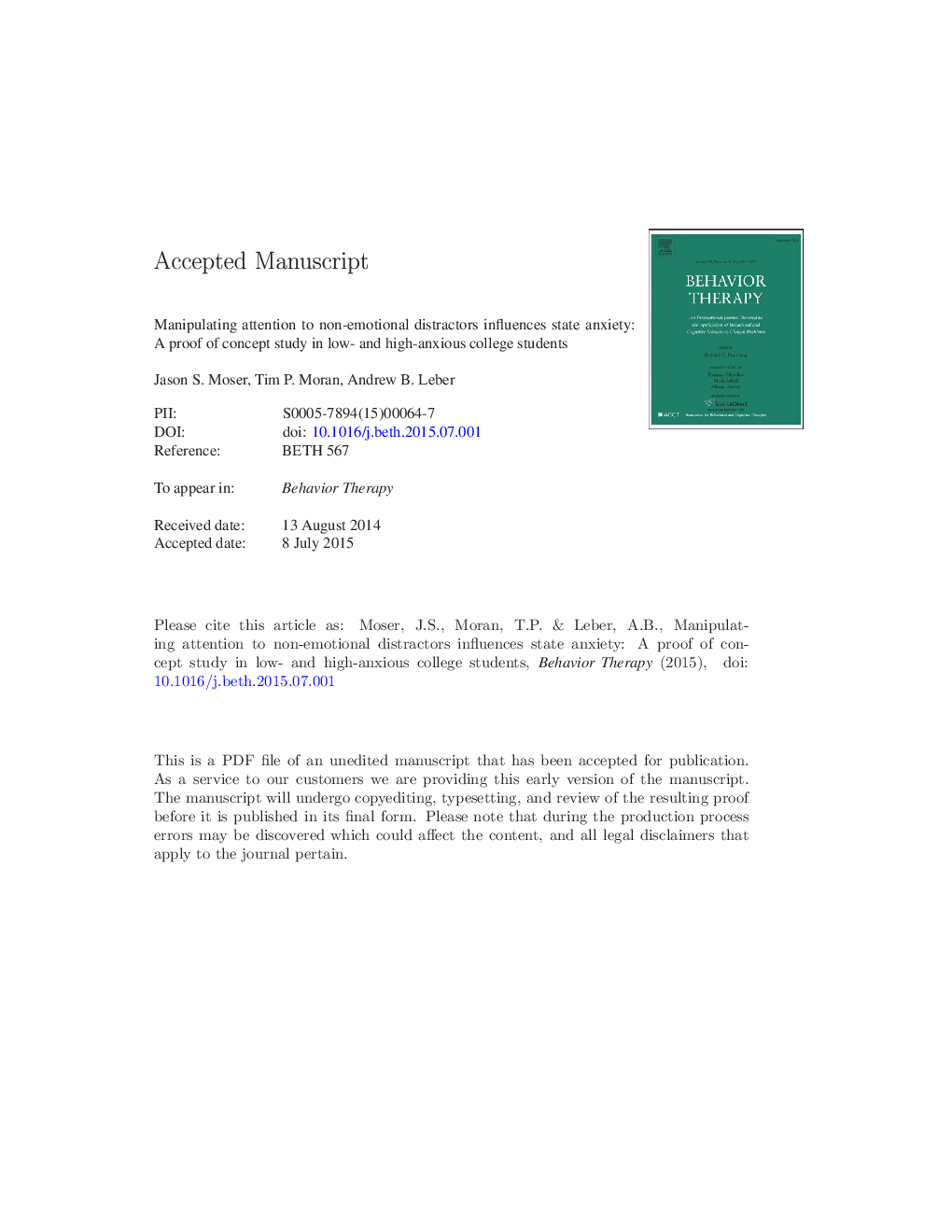| Article ID | Journal | Published Year | Pages | File Type |
|---|---|---|---|---|
| 901291 | Behavior Therapy | 2015 | 31 Pages |
Abstract
Anxious individuals have difficulty inhibiting attention to salient, but nonemotional, distracting stimuli. The exact nature of this relationship remains unclear, however. In the present study, we tested the hypothesis that increasing attention to salient, but nonemotional, distracting stimuli would lead to increases in state anxiety by manipulating attentional strategies during a visual search task. We randomly assigned students low and high in trait anxiety to either a 1-session singleton detection training group or a feature search group. Singleton detection training increases distraction by salient, nonemotional stimuli whereas feature search training protects attention against distracting stimuli. Findings revealed that singleton detection training not only increased distraction by salient, nonemotional stimuli but also increased state anxiety. Moreover, this increase in state anxiety was most pronounced among high trait-anxious individuals. In contrast, feature search training protected attention against distracting stimuli and against increases in state anxiety, particularly in the high trait-anxious individuals. Together, the current findings provide initial support for the notion that distraction by salient, nonemotional stimuli can increase state anxiety levels. Furthermore, these results suggest that individuals already vulnerable to experience anxiety are most likely to be affected by distraction by salient, nonemotional stimuli, and that training anxious individuals to focus on specific shape features may be a viable attention modification intervention.
Related Topics
Health Sciences
Medicine and Dentistry
Psychiatry and Mental Health
Authors
Jason S. Moser, Tim P. Moran, Andrew B. Leber,
